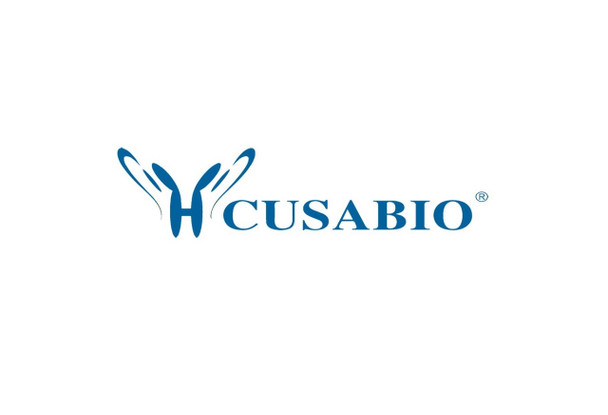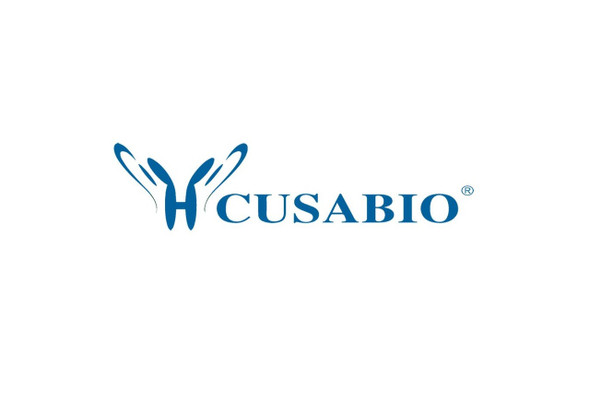Cusabio Virus & Bacteria Recombinants
Recombinant Actinia equina DELTA-actitoxin-Aeq1a | CSB-EP351109ACN
- SKU:
- CSB-EP351109ACN
- Availability:
- 3 - 7 Working Days
Description
Recombinant Actinia equina DELTA-actitoxin-Aeq1a | CSB-EP351109ACN | Cusabio
Alternative Name(s): Equinatoxin II (DELTA-AITX-Aeq1a) (EqT II) (EqTII) (Equinatoxin-2)
Gene Names: N/A
Research Areas: Others
Organism: Actinia equina (Beadlet anemone)
AA Sequence: SADVAGAVIDGASLSFDILKTVLEALGNVKRKIAVGVDNESGKTWTALNTYFRSGTSDIVLPHKVPHGKALLYNGQKDRGPVATGAVGVLAYLMSDGNTLAVLFSVPYDYNWYSNWWNVRIYKGKRRADQRMYEELYYNLSPFRGDNGWHTRNLGYGLKSRGFMNSSGHAILEIHVSKA
Source: E.coli
Tag Info: N-terminal 6xHis-tagged
Expression Region: 36-214aa
Sequence Info: Full Length of Mature Protein
MW: 23.9 kDa
Purity: Greater than 85% as determined by SDS-PAGE.
Relevance: Pore-forming protein that forms cations-selective hydrophilic pores of around 1 nm and causes cardiac stimulation and hemolysis. Pore formation is a multi-step process that involves specific recognition of membrane sphingomyelin using aromatic rich region and adjacent phosphocholine binding site, firm binding to the membrane accompanied by the transfer of the N-terminal region to the lipid-water interface and finally pore formation after oligomerization of several monomers. Cytolytic effects include red blood cells hemolysis, platelet aggregation and lysis, cytotoxic and cytostatic effects on fibroblasts. Lethality in mammals has been ascribed to severe vasospasm of coronary vessels, cardiac arrhythmia, and inotropic effects.
Reference: "Pore formation by the sea anemone cytolysin equinatoxin II in red blood cells and model lipid membranes." Belmonte G., Pederzolli C., Macek P., Menestrina G. J. Membr. Biol. 131:11-22(1993)
Storage: The shelf life is related to many factors, storage state, buffer ingredients, storage temperature and the stability of the protein itself. Generally, the shelf life of liquid form is 6 months at -20?/-80?. The shelf life of lyophilized form is 12 months at -20?/-80?.
Notes: Repeated freezing and thawing is not recommended. Store working aliquots at 4? for up to one week.
Function:
Involvement in disease:
Subcellular Location:
Protein Families:
Tissue Specificity:
Paythway:
Form: Liquid or Lyophilized powder
Buffer: If the delivery form is liquid, the default storage buffer is Tris/PBS-based buffer, 5%-50% glycerol. If the delivery form is lyophilized powder, the buffer before lyophilization is Tris/PBS-based buffer, 6% Trehalose, pH 8.0.
Reconstitution: We recommend that this vial be briefly centrifuged prior to opening to bring the contents to the bottom. Please reconstitute protein in deionized sterile water to a concentration of 0.1-1.0 mg/mL.We recommend to add 5-50% of glycerol (final concentration) and aliquot for long-term storage at -20?/-80?. Our default final concentration of glycerol is 50%. Customers could use it as reference.
Uniprot ID: P61914
HGNC Database Link: N/A
UniGene Database Link: N/A
KEGG Database Link: N/A
STRING Database Link: N/A
OMIM Database Link: N/A







